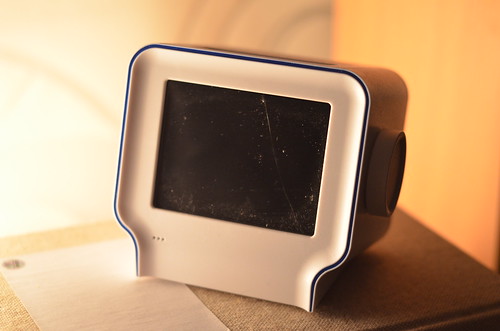I recently decided to upgrade my main laptop. This is a bit of notes on the process as I remember it. I've put up a page about running Debian on the t60.
After toying around with the hardware and checking BIOS settings, I downloaded the Debian 6.0.1a netinst.iso for amd64 and burnt it on a small cdrw. I made another one for the latest BIOS update. Installed the BIOS and then installed minimal Debian Squeeze. After first boot, I switched the sources to Wheezy (testing) and upgraded packages in small batches from within aptsh (upgrade and install, never dist-upgrade). I removed aptitude immediately and installed sudo, zsh, vim, ssh, sshfs, and other necessaries.
I installed memtest86+ and it appeared in GRUB. I left it running over night and found 100% pass (over 7 hours running) on all tests, no logged errors.
I run postfix and logcheck, apt-listchanges (show both mode) and apt-listbugs everywhere; debfoster, deborphan, debian-goodies, popularity-contest.
I installed X and awesome. I didn't bother with the details. Most things worked. I used my old awesome, X resources and other things. ACPI (battery status, temperature) and other meters worked with my old config on the new laptop just as well. Getting X to start with no configuration at all required only installing xserver-xorg-video-radeon and xserver-xorg-video-ati (for autodetect).
I plugged in the printer (Samsung ML-1640), logged into CUPS with a browser and ran Add Printer and it Just Worked. I had installed splix for the drivers earlier. I also installed libreoffice in case I need it.
I installed gphotofs for easy emptying of cameras; geeqie, gimp, and especially ufraw.
Installing fprint-demo let me try out the fingerprint reader (Just Works). I installed libpam-fprint (off sid, pinned) and did dpkg-reconfigure libpam-runtime to enable it. It will now ask for a fingerprint first instead of user password when using sudo or logging in (getty or gdm).
I installed wine and tried spotify (current version crashes ofetn) and used it to extract (install) the ICC profiles (TPFLX.ICM) from Lenovo. I haven't looked into colour calibration more closely yet.
I've blacklisted pcspkr, since for some reason loading that makes the system beep incredibly loud. Normal beeps go through the mixer now. The mixer is clean and all channels seem to work (haven't tried recording or SPDIF). Correct chipset variation was autodetected, unlike on an Amilo.
I installed qemu-kvm, created a logical volume, and installed the OEM licensed windows XP in it. The mouse seems to get extra accelerated while in the qemu window. The system works quite nicely and installing didn't require any trickery. I intend to see if I can run some difficult software on it (such as Dynamic C).











